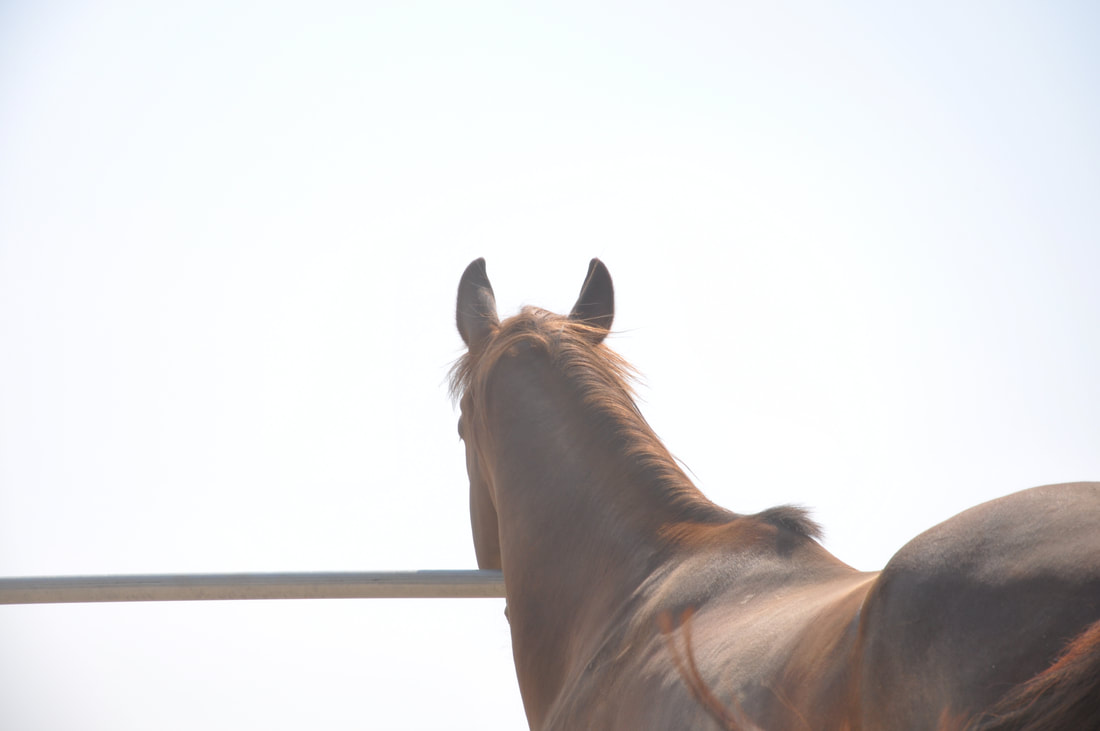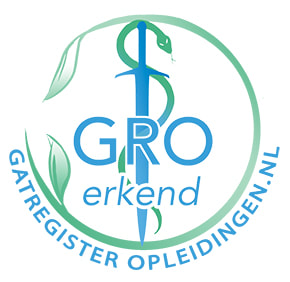|
》Over waarom voerbeloningen niet altijd een goed idee is, we R+ te veel vermenselijken en daardoor alsnog te veel druk op het paard leggen & meer; "Operant conditioning, and the usual methods we employ with non-traumatised horses may not be adequate for those animals with a trauma history (Schlote,2017 aShalev et al., 1996). Generally speaking operant conditioning requires the horse to perform behaviours that can be reinforced. Traumatised horses do not offer behaviours we can easily reinforce or even would want to reinforce! Escape behaviour is often what we would see instead.These animals are often too fearful for food rewards to be effective (it also can cause approach/avoidance conflict).This means they can quickly take themselves over threshold something to be avoided. It is especially problematic if a horse has a history of food deprivation as their desire for food even a low value food/reinforcer may lead them to come outside their comfort zone or window of tolerance (Corrigan et al., 2011; Siegel, n.d.)." . Een heel duidelijk en mooi beschreven artikel dat tevens belicht waarom ik woorden als "Rehabiliteren" of "Decompressing" prefereer boven "Training". Lees het originele artikel hieronder: Trauma and Operant Conditioning : Why You Can’t Train it Away?"Operant conditioning, and the usual methods we employ with non-traumatised horses may not be adequate for those animals with a trauma history (Schlote,2017 aShalev et al., 1996). Generally speaking operant conditioning requires the horse to perform behaviours that can be reinforced. Traumatised horses do not offer behaviours we can easily reinforce or even would want to reinforce! Escape behaviour is often what we would see instead. These animals are often too fearful for food rewards to be effective (it also can cause approach/avoidance conflict).This means they can quickly take themselves over threshold something to be avoided. It is especially problematic if a horse has a history of food deprivation as their desire for food even a low value food/reinforcer may lead them to come outside their comfort zone or window of tolerance (Corrigan et al., 2011; Siegel, n.d.). It is important to recognise that the behaviours that we are seeing are attempts by the horse or dog to make themselves feel safe or it is offering them a sense of relief. Each horse or dog will have their own ways of behaving that help them to feel better this is where simply observing can be so helpful. Fear may be so all consuming it overrides everything else! Touch may be frightening and targeting may also be inappropriate. Just because the horse is on a target does not always indicate the absence of negative emotional states. Avoiding the use of a fake hand (Marder et al., 2013) is better so that they become truly used to humans using classical conditioning and later shaping once a level of physical and emotional safety has been established (Van Fleet,2010). Using non-contingent reinforcement that does not depend on the animal offering a behaviour or relaxation but instead allows them to slowly begin to form a positive association whilst remaining below or at threshold may be more helpful. This is challenging in practice though and may require some trial and error. Making use of distance with or without protected contact (Laule & Whittaker, n.d.) can also be beneficial as can awareness of the animals spatial requirements which may vary even during a session for many reasons such as changes in the environment . It is important to understand though that with traumatised horses their feelings of safety and comfort may change day to day or even hour by hour depending on other factors. Adopting a purely operant approach when working with trauma or even with other challenges for that matter fails to address the underlying emotions the horse or dog is experiencing. Emotions drive and influence behaviour , the underlying emotion and the strength of that emotion also determine how and with what intensity the behaviour is expressed. Behaviours are also communication. Simply asking a horse to stand at a stationary target or asking a dog to sit or “go to mat” does not mean that the underlying emotion has been changed or that they are now able to cope. All horses and dogs are individuals how they respond and feel will differ. This is dependent on their genetics , previous experience in particular early experiences are especially powerful and their current environment (Champagne & Curley, 2009; Raoult et al., 2017; Špinka, 2012). Understanding what they need in one moment may differ in the next . Seeking to offer support rather than immediately stepping in to modify a behaviour that is determined by ourselves to be undesirable , that is not to say that there is no role for changing behaviour particular if they are unsafe or detrimental to the horse or dog or their caregiver but any alternative should genuinely be helpful to them. Having awareness of signs of tension , stress and arousal level and tailoring the training or interaction accordingly is important in helping them feel safe enough to learn. Then positive reinforcement training in combination with meeting their physical and emotional needs with friends, forage and freedom can begin. This is an updated blog post from 2019 inspired by all of the incredible discussions looking beyond operant conditioning in particular the amazing Beyond the Operant discussions with Dr Kathy Murphy of Barking Brains, Andrew Hale of Dog Centred Care , Kim Brophy of the Dog Door and Scott Stauffer at Affective Dog Behaviour . Not to forget the always inspiring conversations I have with my colleagues at Mimer Centre on this subject. References Champagne, F. A., & Curley, J. P. (2009). Epigenetic mechanisms mediating the long-term effects of maternal care on development. In Neuroscience and Biobehavioral Reviews (Vol. 33, Issue 4, pp. 593–600). https://doi.org/10.1016/j.neubiorev.2007.10.009 Corrigan, F. M., Fisher, J. J., & Nutt, D. J. (2011). Autonomic dysregulation and the Window of Tolerance model of the effects of complex emotional trauma. In Journal of Psychopharmacology (Vol. 25, Issue 1, pp. 17–25). https://doi.org/10.1177/0269881109354930 Laule, G., & Whittaker, M. (n.d.). Protected Contact and Elephant Welfare. Marder, A. R., Shabelansky, A., Patronek, G. J., Dowling-Guyer, S., & D’Arpino, S. S. (2013). Food-related aggression in shelter dogs: A comparison of behavior identified by a behavior evaluation in the shelter and owner reports after adoption. Applied Animal Behaviour Science, 148(1–2). https://doi.org/10.1016/j.applanim.2013.07.007 Raoult, C. M. C., Moser, J., & Gygax, L. (2017). Mood as cumulative expectation mismatch: A test of theory based on data from non-verbal cognitive bias tests. Frontiers in Psychology, 8(DEC). https://doi.org/10.3389/fpsyg.2017.02197 Shalev, A. Y., Bonne, O., & Eth, S. (1996). Treatment of posttraumatic stress disorder: A review. In Psychosomatic Medicine (Vol. 58, Issue 2). https://doi.org/10.1097/00006842-199603000-00012 Siegel, D. J. (n.d.). Attachment and Self-Understanding: Parenting with the Brain in Mind. Špinka, M. (2012). Social dimension of emotions and its implication for animal welfare. Applied Animal Behaviour Science, 138(3–4), 170–181. https://doi.org/10.1016/j.applanim.2012.02.005 Resources Affective Dog Behaviour Animal Assisted Play Therapy -Rise Van Fleet and Tracie Faa-Thompson Barking Brains Control the Meerkat Dog Centred Care Dogs Impacted by Trauma EQUUSOMA The Dog Door Mimer Centre Understand Animals https://www.facebook.com/mimercentre/ Jessie Sams (2021) Animal Behaviour and Trauma Recovery Service
0 Comments
Leave a Reply. |
Details
AuthorZoë van Mourik: Equine Trauma Specialist, Behaviorist Archives
April 2024
Categories
All
|

 RSS Feed
RSS Feed


